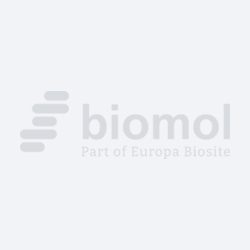Cookie preferences
This website uses cookies, which are necessary for the technical operation of the website and are always set. Other cookies, which increase the comfort when using this website, are used for direct advertising or to facilitate interaction with other websites and social networks, are only set with your consent.
Configuration
Technically required
These cookies are necessary for the basic functions of the shop.
"Allow all cookies" cookie
"Decline all cookies" cookie
CSRF token
Cookie preferences
Currency change
Customer-specific caching
FACT-Finder tracking
Individual prices
Selected shop
Session
Comfort functions
These cookies are used to make the shopping experience even more appealing, for example for the recognition of the visitor.
Note
Show the facebook fanpage in the right blod sidebar
Statistics & Tracking
Affiliate program
Conversion and usertracking via Google Tag Manager
Track device being used

| Item number | Size | Datasheet | Manual | SDS | Delivery time | Quantity | Price |
|---|---|---|---|---|---|---|---|
| ELK-ES11157.50 | 50 µl | - | - |
10 - 14 business days* |
173.00€
|
||
| ELK-ES11157.100 | 100 µl | - | - |
10 - 14 business days* |
290.00€
|
If you have any questions, please use our Contact Form.
You can also order by e-mail: info@biomol.com
Larger quantity required? Request bulk
You can also order by e-mail: info@biomol.com
Larger quantity required? Request bulk
This gene encodes a member of the nuclear hormone receptor family, specifically the NR1 subfamily... more
Product information "Anti-NR1D2"
This gene encodes a member of the nuclear hormone receptor family, specifically the NR1 subfamily of receptors. The encoded protein functions as a transcriptional repressor and may play a role in circadian rhythms and carbohydrate and lipid metabolism. Alternatively spliced transcript variants have been described. [provided by RefSeq, Feb 2009], Protein function: Transcriptional repressor which coordinates circadian rhythm and metabolic pathways in a heme-dependent manner. Integral component of the complex transcription machinery that governs circadian rhythmicity and forms a critical negative limb of the circadian clock by directly repressing the expression of core clock components BMAL1 and CLOCK. Also regulates genes involved in metabolic functions, including lipid metabolism and the inflammatory response. Acts as a receptor for heme which stimulates its interaction with the NCOR1/HDAC3 corepressor complex, enhancing transcriptional repression. Recognizes two classes of DNA response elements within the promoter of its target genes and can bind to DNA as either monomers or homodimers, depending on the nature of the response element. Binds as a monomer to a response element composed of the consensus half-site motif 5'-[A/G]GGTCA-3' preceded by an A/T-rich 5' sequence (RevRE), or as a homodimer to a direct repeat of the core motif spaced by two nuclegotides (RevDR-2). Acts as a potent competitive repressor of ROR alpha (RORA) function and also negatively regulates the expression of NR1D1. Regulates lipid and energy homeostasis in the skeletal muscle via repression of genes involved in lipid metabolism and myogenesis including: CD36, FABP3, FABP4, UCP3, SCD1 and MSTN. Regulates hepatic lipid metabolism via the repression of APOC3. Represses gene expression at a distance in macrophages by inhibiting the transcription of enhancer-derived RNAs (eRNAs). In addition to its activity as a repressor, can also act as a transcriptional activator. Acts as a transcriptional activator of the sterol regulatory element-binding protein 1 (SREBF1) and the inflammatory mediator interleukin-6 (IL6) in the skeletal muscle. Plays a role in the regulation of circadian sleep/wake cycle, essential for maintaining wakefulness during the dark phase or active period. Key regulator of skeletal muscle mitochondrial function, negatively regulates the skeletal muscle expression of core clock genes and genes involved in mitochondrial biogenesis, fatty acid beta-oxidation and lipid metabolism. May play a role in the circadian control of neutrophilic inflammation in the lung. [The UniProt Consortium] Recommended dilutions: WB 1:500-2000 ELISA 1:5000-20000. Cellular localization: Nucleus . Cytoplasm . Phosphorylation by CSNK1E enhances its cytoplasmic localization. .
| Keywords: | Anti-RVR, Anti-EAR-1R, Anti-Rev-erb-beta, Anti-Rev-erb alpha-related receptor, Anti-V-erbA-related protein 1-related, Anti-Orphan nuclear hormone receptor BD73, Anti-Nuclear receptor subfamily 1 group D member 2, NR1D2 rabbit pAb |
| Supplier: | ELK Biotechnology |
| Supplier-Nr: | ES11157 |
Properties
| Application: | WB, ELISA |
| Antibody Type: | Polyclonal |
| Conjugate: | No |
| Host: | Rabbit |
| Species reactivity: | human, rat, mouse |
| Immunogen: | Synthesized peptide derived from part region of human protein |
| MW: | 63 kD |
| Format: | Purified |
Database Information
| KEGG ID : | K08531 | Matching products |
| UniProt ID : | Q14995 | Matching products |
| Gene ID : | GeneID 9975 | Matching products |
Handling & Safety
| Storage: | -20°C |
| Shipping: | +4°C (International: +4°C) |
Caution
Our products are for laboratory research use only: Not for administration to humans!
Our products are for laboratory research use only: Not for administration to humans!
You will get a certificate here
Viewed

